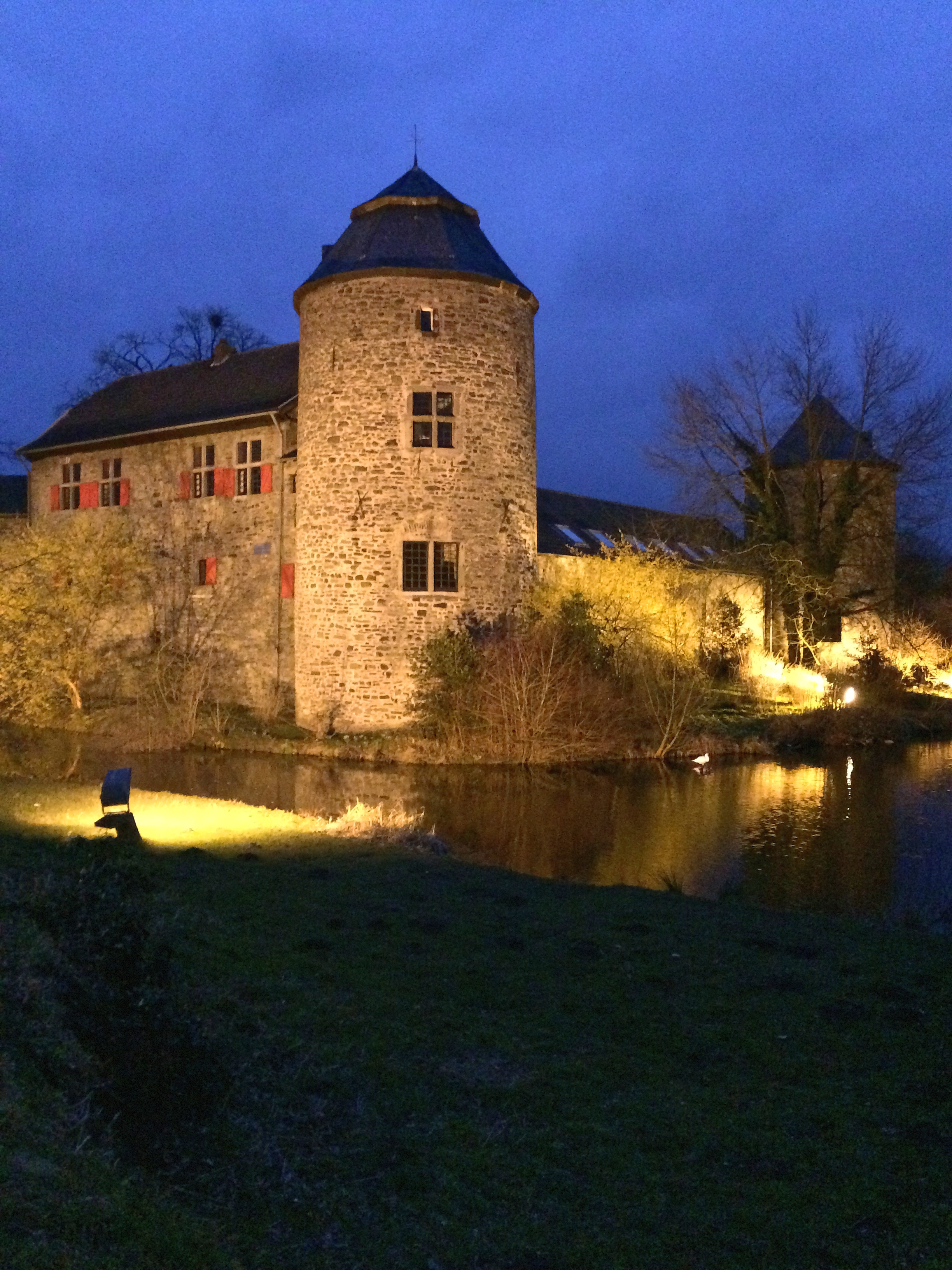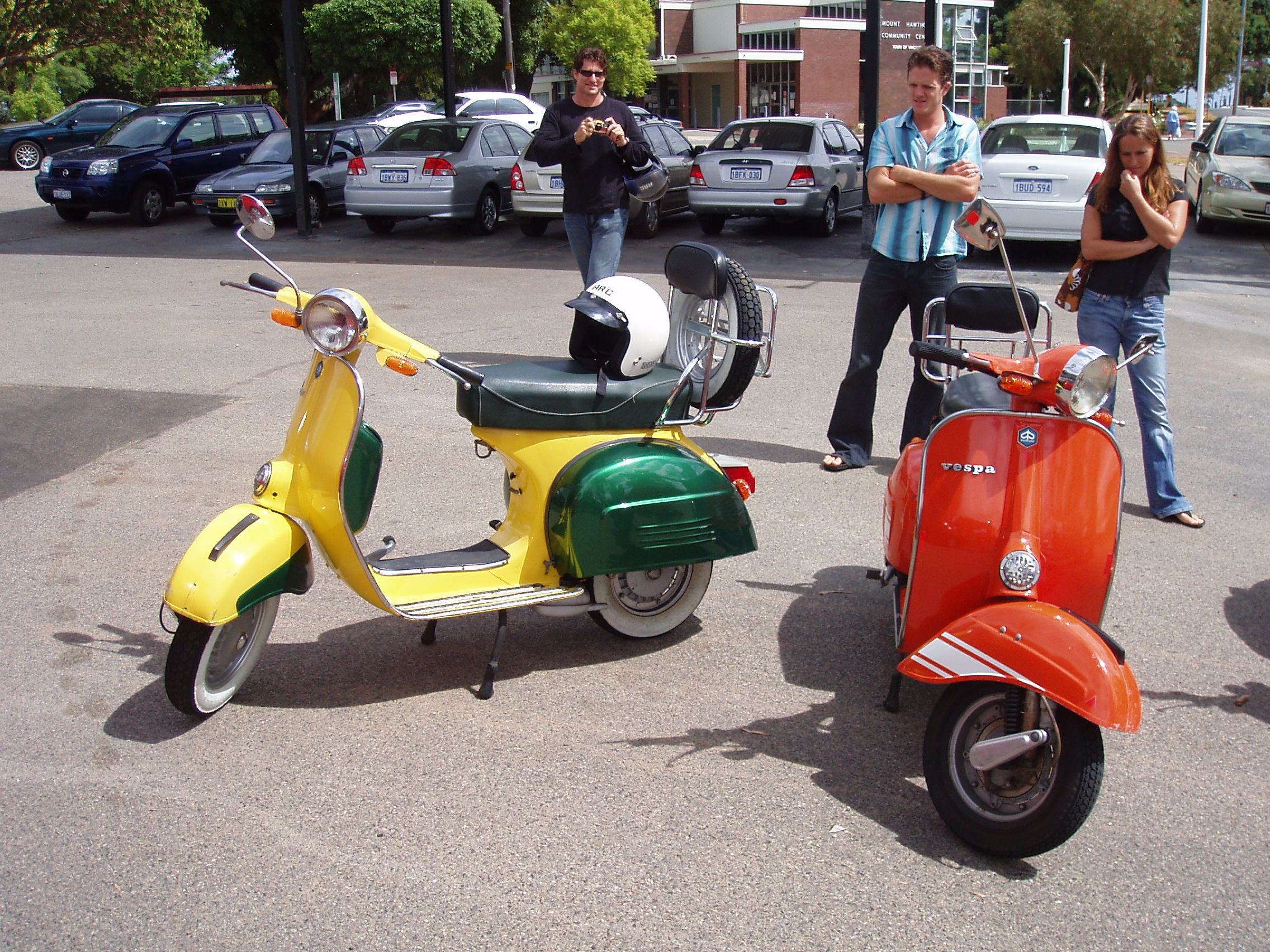|
Lintorf
Lintorf is a village at the transition of the Berg region into the lower Rhine plain in North Rhine-Westphalia, Germany. Since 1975 it has been a quarter of the city of Ratingen. History, geography & transport Lintorf was suburbanised in 1975. Ratingen belongs to the Mettmann district in the Düsseldorf region (North Rhine-Westphalia state). Before then, Lintorf was an independent municipality and seat of administration of Amt Angermund (since early 14th century; 1929-1950 ''"Amt Ratingen-Land"''; 1950-1974 ''"Amt Angerland"''). Lintorf is on the Cologne-Ratingen-Duisburg line, but since 1985 has had no train stations. The place is connected by autobahns A52 (Essen—Düsseldorf, exit Ratingen Tiefenbroich), A524 (autobahn interchange Breitscheid—Krefeld, exit Ratingen-Lintorf), A3 (Oberhausen—Cologne, exit A52). The old boundary lies in the northern edge of the approach lane of the Düsseldorf Airport (3 km runway). Lintorf was the site of a displaced persons camp ... [...More Info...] [...Related Items...] OR: [Wikipedia] [Google] [Baidu] |
Hoffmann Motorcycles
Hoffmann was a bicycle manufacturer in Ratingen-Lintorf, Germany. Between 1948 and 1954 the company also manufactured motorcycles. It made a range of models using engines from 125cc to 250cc made by ILO, and the Gouverneur, which had a transversely-mounted 248 cc flat twin four-stroke engine designed by Richard Küchen, and shaft drive. The Gouverneur was developed into the MP 250-2 and finally, in 1953, the S 300 model. From 1949 to 1954 Hoffmann also made at least 60,000 Vespa motor scooters under license. A licensing dispute brought this to an end in 1954. At the same time, Hoffmann also withdrew from making its own motorcycles, and had further legal problems with their microcar, the Auto-Kabine. Beginning Jakob Oswald Hoffmann moved his Solinger Bicycle Factory to Lintorf, near Düsseldorf, shortly after the end of World War II. In the immediate postwar era, the factory made household goods, tools, and bicycles. The factory began making motorcycles in 1948. Vespa prod ... [...More Info...] [...Related Items...] OR: [Wikipedia] [Google] [Baidu] |
Troisdorf–Mülheim-Speldorf Railway
The Troisdorf–Mülheim-Speldorf railway is the main axis for freight between Cologne and the Ruhr area in Germany and the Netherlands. It connects the marshalling yards of Duisburg-Wedau (formerly important, now closed and demolished) and Gremberg (in Cologne). History The track was opened on 18 November 1874 by the Rhenish Railway Company (german: Rheinischen Eisenbahn-Gesellschaft) to connect its Ruhr line with the Right Rhine line. It runs parallel, but a few kilometres to the east of the Cologne–Duisburg trunk line opened by the Cologne-Minden Railway Company (''Cöln-Mindener Eisenbahn-Gesellschaft'') thirty years earlier, from which it hoped to draw traffic. Since the line bypasses the centre of the towns, soon after the nationalisation of both companies in 1879/1880 passenger operations were closed on parts of it. Except on a few short sections the line is now used exclusively for freight. Passengers After the Second World War passenger services ran only on the sec ... [...More Info...] [...Related Items...] OR: [Wikipedia] [Google] [Baidu] |
Ratingen
Ratingen ( li, Rotinge) is a town in the district of Mettmann in North Rhine-Westphalia, Germany. It lies in the northwestern part of Berg about 12 km northeast of Düsseldorf. Administration With a communal reform of 1975 the independent municipalities of Breitscheid, Eggerscheidt, Hösel, Lintorf (seat Angerland) as well as the local part of Homberg and the municipality of Homberg-Meiersberg (seat Hubbelrath) were added into the city of Ratingen. History Ratingen was settled before 849. Since the Middle Ages, the Ratingen area belonged to the count and later dukes of Berg. On December 11, 1276 the settlement received city rights. Ratingen was one of the four places of Berg which experienced an economic boom in the end of the Middle Ages, but slowed during the Thirty Years' War. At the beginning of the Industrial Age, the first manufacturing plants opened in 1783. In Cromford the first mechanical spinnery of Europe opened, which grew into the ''Textilfabrik Cromford'', ... [...More Info...] [...Related Items...] OR: [Wikipedia] [Google] [Baidu] |
Johann Peter Melchior
Johann Peter Melchior (8 March 1747 – 13 June 1825) was a German porcelain modeller. Melchior was born in Lintorf. He was interested in art from an early age and was apprenticed to a sculptor in Düsseldorf. He made a name for himself in the porcelain trade and was named ''Modellmeister'' at the acclaimed Höchst porcelain factory in 1767, a post he held until 1779. He later worked at the factories at Frankenthal (1779–93) and Nymphenburg (1797–1822). He died in Nymphenburg. Melchior was a transitional figure between Rococo and Neoclassicism Neoclassicism (also spelled Neo-classicism) was a Western cultural movement in the decorative and visual arts, literature, theatre, music, and architecture that drew inspiration from the art and culture of classical antiquity. Neoclassicism was .... His early work was graceful and often sentimental, and his favourite subjects included religious groups, pastoral scenes, characters from mythology, and children. As his ca ... [...More Info...] [...Related Items...] OR: [Wikipedia] [Google] [Baidu] |
Hünnebeck
{{Infobox company , name = Harsco Infrastructure Deutschland GmbH , logo = , type = GmbH , foundation = 1929 , location = Ratingen, Germany , area_served = Worldwide , industry = Construction, Civil Engineering , products = Formwork, Scaffolding, Safety Systems and Services , homepage www.harsco-i.de The Harsco Infrastructure Deutschland GmbH (''formerly Hünnebeck GmbH''), with its headquarters located in Ratingen, Germany, is a subsidiary of the Harsco Corporation. The company develops, rents and sells formwork and scaffolding products for the main construction trade and civil engineering projects. Harsco Infrastructure also offers a range of services for the planning and development of projects, on top of logistics. The majority of the small- and medium-size enterprises which are its customers, come from the construction trade as well as the building industry, whereas, the revenues in the scaffolding segment are mainly composed of sales to ... [...More Info...] [...Related Items...] OR: [Wikipedia] [Google] [Baidu] |
Bundesautobahn 524
is an autobahn in Germany. The A 524 is a short connector, heading west from Breitscheid and the A 52 towards Krefeld. The autobahn was built in the 1980s by upgrading the B 288. A short (1 km) section of freeway from the A 57 into Krefeld is also designated as part of the A 524. Currently, an extension westward to the A 59 is listed as "high priority" in the latest ''Bundesverkehrswegeplan'' (Federal Transport Infrastructure Plan), and has started construction with completion slated for 2013. This project will be accompanied by a new free-flowing 4-way interchange to replace two low-capacity junctions: a T-intersection with the A 59 and a half-folded-diamond interchange with the B 8. Completion of the interchange is also set for 2013, with the older junctions expected to be closed at the same time. Further extension along the B 288, across the Rhine and into Krefeld Krefeld ( , ; li, Krieëvel ), also spelled Crefeld ... [...More Info...] [...Related Items...] OR: [Wikipedia] [Google] [Baidu] |
Clay
Clay is a type of fine-grained natural soil material containing clay minerals (hydrous aluminium phyllosilicates, e.g. kaolin, Al2 Si2 O5( OH)4). Clays develop plasticity when wet, due to a molecular film of water surrounding the clay particles, but become hard, brittle and non–plastic upon drying or firing. Most pure clay minerals are white or light-coloured, but natural clays show a variety of colours from impurities, such as a reddish or brownish colour from small amounts of iron oxide. Clay is the oldest known ceramic material. Prehistoric humans discovered the useful properties of clay and used it for making pottery. Some of the earliest pottery shards have been dated to around 14,000 BC, and clay tablets were the first known writing medium. Clay is used in many modern industrial processes, such as paper making, cement production, and chemical filtering. Between one-half and two-thirds of the world's population live or work in buildings made with clay, often ... [...More Info...] [...Related Items...] OR: [Wikipedia] [Google] [Baidu] |
World War II
World War II or the Second World War, often abbreviated as WWII or WW2, was a world war that lasted from 1939 to 1945. It involved the vast majority of the world's countries—including all of the great powers—forming two opposing military alliances: the Allies and the Axis powers. World War II was a total war that directly involved more than 100 million personnel from more than 30 countries. The major participants in the war threw their entire economic, industrial, and scientific capabilities behind the war effort, blurring the distinction between civilian and military resources. Aircraft played a major role in the conflict, enabling the strategic bombing of population centres and deploying the only two nuclear weapons ever used in war. World War II was by far the deadliest conflict in human history; it resulted in 70 to 85 million fatalities, mostly among civilians. Tens of millions died due to genocides (including the Holocaust), starvation, ma ... [...More Info...] [...Related Items...] OR: [Wikipedia] [Google] [Baidu] |
Lead
Lead is a chemical element with the symbol Pb (from the Latin ) and atomic number 82. It is a heavy metal that is denser than most common materials. Lead is soft and malleable, and also has a relatively low melting point. When freshly cut, lead is a shiny gray with a hint of blue. It tarnishes to a dull gray color when exposed to air. Lead has the highest atomic number of any stable element and three of its isotopes are endpoints of major nuclear decay chains of heavier elements. Lead is toxic, even in small amounts, especially to children. Lead is a relatively unreactive post-transition metal. Its weak metallic character is illustrated by its amphoteric nature; lead and lead oxides react with acids and bases, and it tends to form covalent bonds. Compounds of lead are usually found in the +2 oxidation state rather than the +4 state common with lighter members of the carbon group. Exceptions are mostly limited to organolead compounds. Like the lighter members of the ... [...More Info...] [...Related Items...] OR: [Wikipedia] [Google] [Baidu] |
Vespa
Vespa () is an Italian luxury brand of scooter (motorcycle), scooters and mopeds manufactured by Piaggio. The name means wasp in Italian. The Vespa has evolved from a single model motor scooter manufactured in 1946 by Piaggio & Co. S.p.A. of Pontedera, Italy to a full line of scooters and one of seven companies today owned by Piaggio. From their inception, Vespa scooters have been known for their painted, pressed steel unibody which combines, in a unified structural unit, a complete cowling for the engine (enclosing the engine mechanism and concealing dirt or grease), a flat floorboard (providing foot protection), and a prominent front fairing (providing wind protection). History After World War II, in light of its agreement to cease war activities with the Allies, Italy had its aircraft industry severely restricted in both capability and capacity. Piaggio emerged from the conflict with its Pontedera bomber plane plant demolished by bombing. Italy's crippled economy, and t ... [...More Info...] [...Related Items...] OR: [Wikipedia] [Google] [Baidu] |
Gravel
Gravel is a loose aggregation of rock fragments. Gravel occurs naturally throughout the world as a result of sedimentary and erosive geologic processes; it is also produced in large quantities commercially as crushed stone. Gravel is classified by particle size range and includes size classes from granule- to boulder-sized fragments. In the Udden-Wentworth scale gravel is categorized into granular gravel () and pebble gravel (). ISO 14688 grades gravels as fine, medium, and coarse, with ranges 2–6.3 mm to 20–63 mm. One cubic metre of gravel typically weighs about 1,800 kg (or a cubic yard weighs about 3,000 lb). Gravel is an important commercial product, with a number of applications. Almost half of all gravel production is used as aggregate for concrete. Much of the rest is used for road construction, either in the road base or as the road surface (with or without asphalt or other binders.) Naturally occurring porous gravel deposits have a ... [...More Info...] [...Related Items...] OR: [Wikipedia] [Google] [Baidu] |






